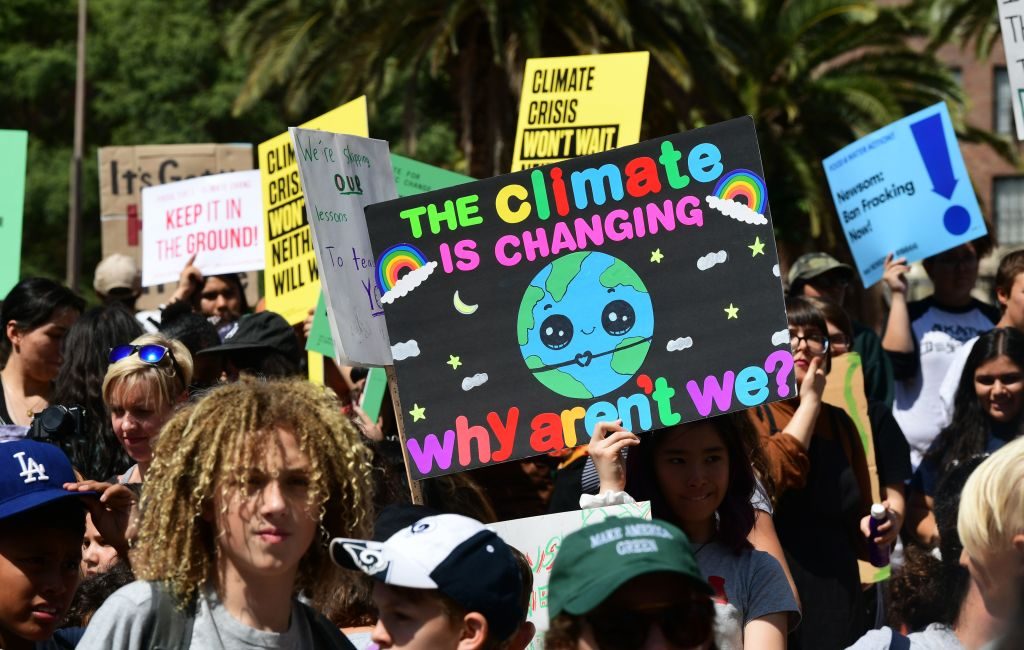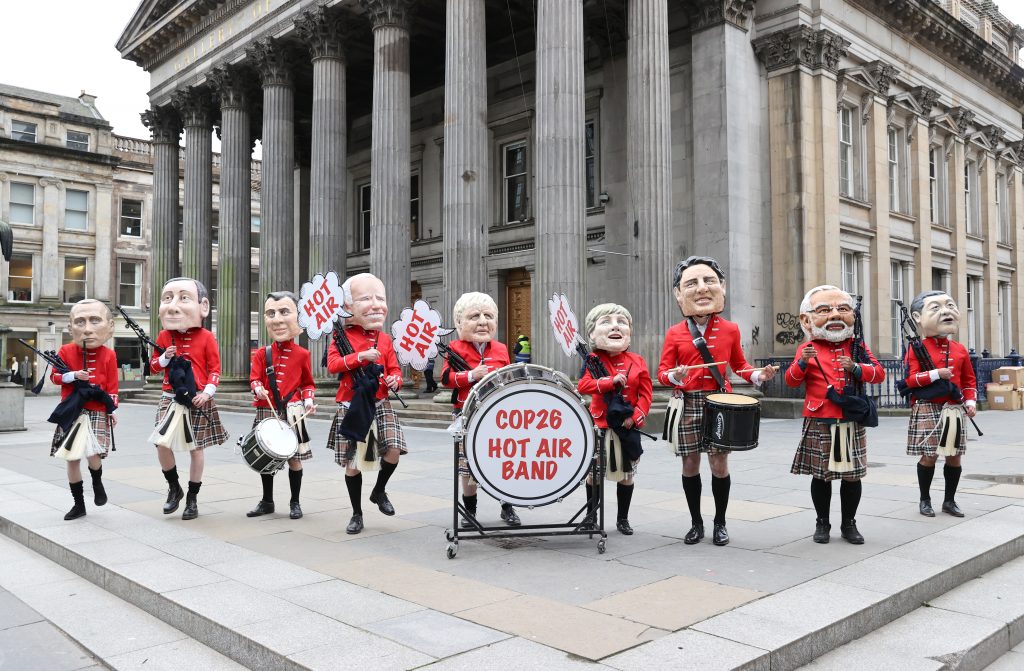Sustainability
How Can Arts Organizations Reduce Their Carbon Footprint? Here Are 6 Takeaways From a New Art-World Climate Conference
A 50 percent cut in emissions by 2030 is not out of reach for the industry.

A 50 percent cut in emissions by 2030 is not out of reach for the industry.

Vivienne Chow

Is the art world going to save the warming planet? Yes, according to novelist and poet Ben Okri, for art deals with vision, which is needed to paint the picture of a sustainable future amid the urgent calls for change. “Don’t talk yourselves down,” he told the art-world audience members at the Gallery Climate Coalition (GCC) conference “Decarbonising the Art World” at London’s Barbican Centre on November 24.
Okri’s words were not empty. The GCC, a confederation of some 600 dealers, has set the ambitious goals of reducing the art world’s carbon emissions by 50 percent (from 2018 and 2019 levels) and achieving zero-waste operations by 2030. The conference marked the official launch of the detailed, 43-page Decarbonisation Action Plan, which offers concrete tips and a step-by-step guide to help its members (consisting primarily of art galleries and artists in Europe and the Americas) to transform pledges into action.
The goal is aligned with those set out by the Paris Agreement, and the conference at the Barbican Centre was intended as a follow-up to the recently concluded United Nations Climate Change Conference (COP26) in Glasgow, which lacked discussion of culture on the agenda, said Lucia Pietroiusti, a curator and strategic consultant for ecology at the Serpentine Galleries.

An Oxfam demonstration outside Glasgow’s Gallery of Modern Art on November 1, 2021. Photo: Chris Jackson/Getty Images.
“Compared to five years ago, there’s so much more activism and people are more outspoken,” Danny Chivers, an environmental researcher and advisor who played a key role in drafting the GCC’s Decarbonisation Action Plan, said at the conference. “If you talked about 50 percent [reduction in carbon emissions], people would be like, ‘Oh God!’ but now, people would say, ‘Let’s have that conversation.’ We are in a different space.”
Experts and some art-world leaders believe the goal is achievable—particularly those who have already taken action, following the coalition’s guidelines and plan.
Here are six simple steps proposed by GCC’s Decarbonisation Action Plan for the art world to kickstart reducing carbon emissions:
The GCC encourages art organizations are encouraged to form an internal group dedicated to making changes to reduce environmental impact. The team should be in charge of setting and reviewing targets, organizing meetings, and drafting a timeline for the organization to implement the action plan.
“It’s like a tax return,” the London-based dealer Kate MacGarry said at the conference. Reduction goals cannot be set without calculating the baseline emissions in the first place, according to experts. The GCC has developed an online carbon calculator for its members, who are encouraged to do the carbon audit annually.
In MacGarry’s case, emissions from business travels and art transport accounted for nearly 45 percent of the gallery’s total carbon emissions between 2018 and 2019. This year, the dealer decided to go to Art Basel by train. She has also given up bubble wrap and plastic for art packaging.
The GCC action plan suggests art organizations divide their reduction goal into several stages. Those aiming to reduce carbon emissions by 50 percent in 2030 can start with a 25-to-30 percent reduction from the baseline by 2025. Those who are aiming for a 70 percent reduction by 2030 can set themselves a higher bar, at a 30-to-40 percent reduction by 2025.
As a follow-up to step four, art organizations can look at their year-on-year annual carbon dioxide allocation, which should show a gradual reduction in carbon emissions every year. It’s almost like setting a financial goal and creating an annual financial budgeting that allows one to achieve this goal within a period of time, says the action plan.
For instance, a 30 percent reduction of carbon emissions by 2025 will require an average of five percent cut per year from 2019 to 2025. Then an art organization can look into the various areas of its operation, from travels to energy consumption and shipping, and decide what actions to take in order to achieve the reduction goal.
Once you have done your carbon audit and set your goals, now it’s time to take action. The GCC has come up with a list of 50 effective actions to give art organizations ideas for changes to make, from smaller, manageable tasks to ambitious jobs that may require a little more research and planning. These actions are divided into six categories: shipping, travel, energy, packaging and materials, waste and recycling, as well as exhibitions and gallery spaces.
Regarding shipping, for example, the GCC asks its members to prioritize land and sea freight over air. (“Collectors need to be understanding as well, and not hurry the works,” said MacGarry.) The coalition also asks members to reconsider non-essential travel and avoid flying—whenever possible, taking a train rather than a plane. It also recommends hiring local teams to install international exhibitions remotely and avoiding single-use plastics in packaging.
This article was updated on November 26.